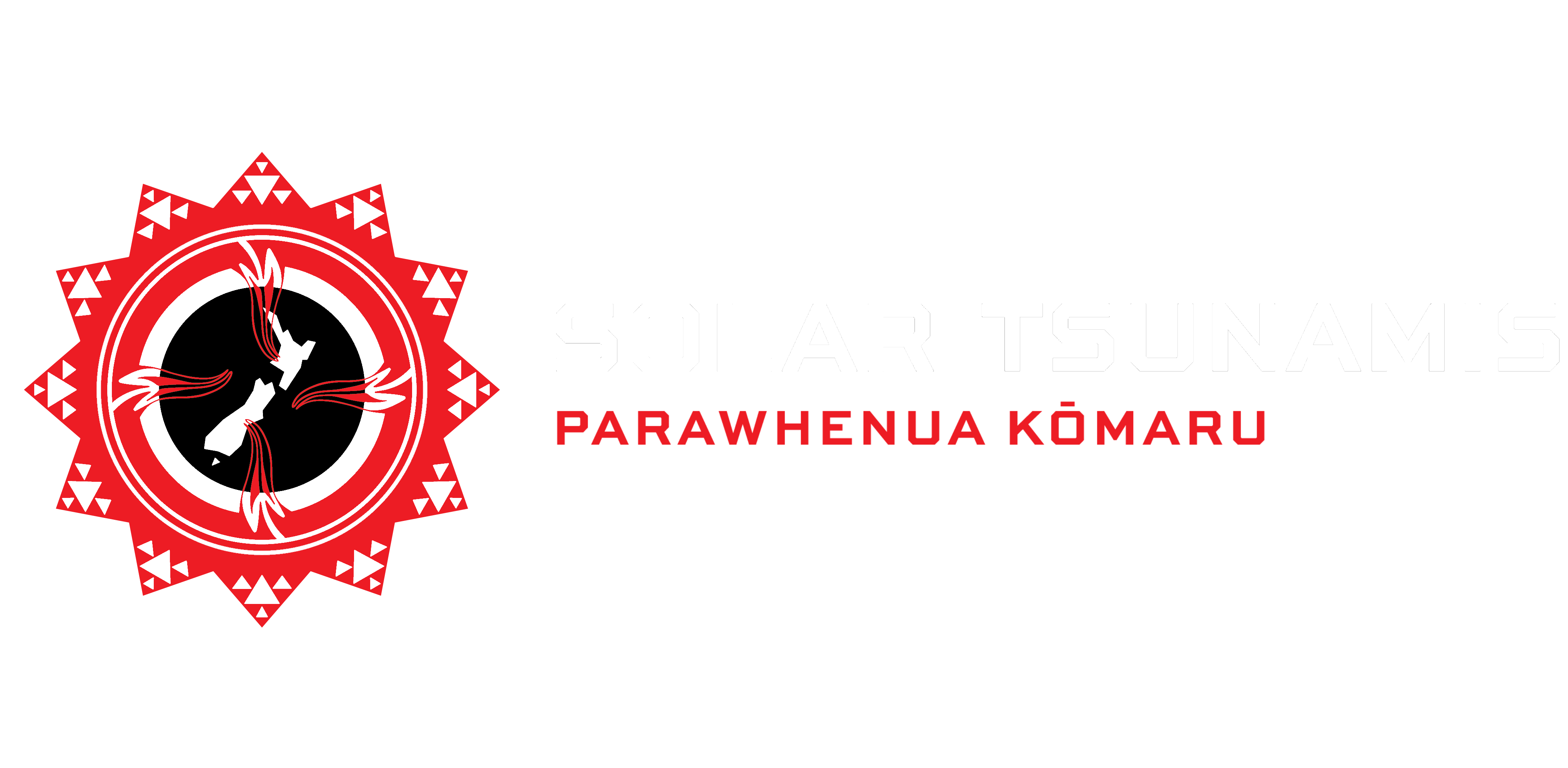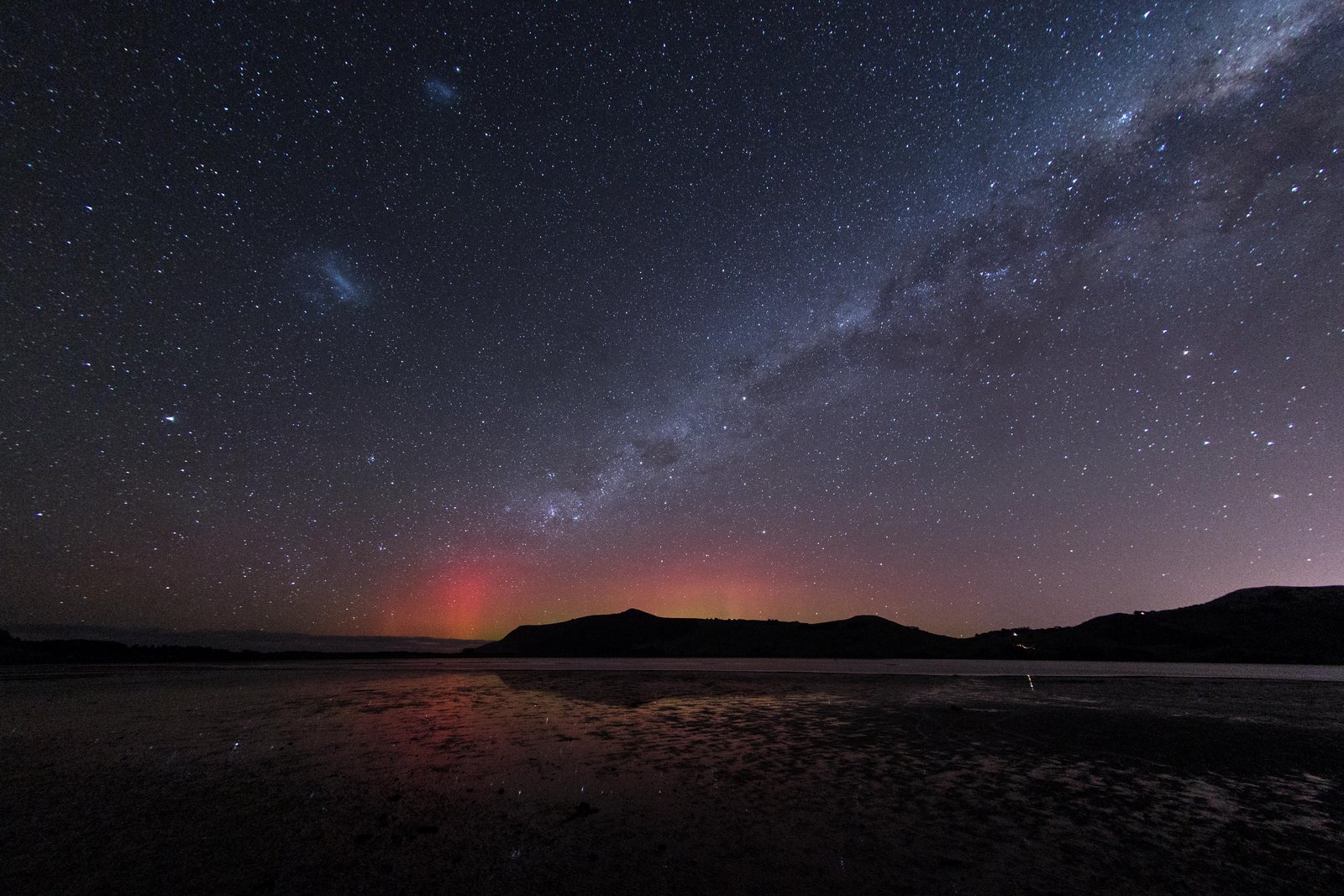If you live in a place close to the Earth’s geomagnetic poles, from time to time you might see on the news that it’s a good night to put on your jacket, grab a camera and head to a secluded spot to see an aurora.
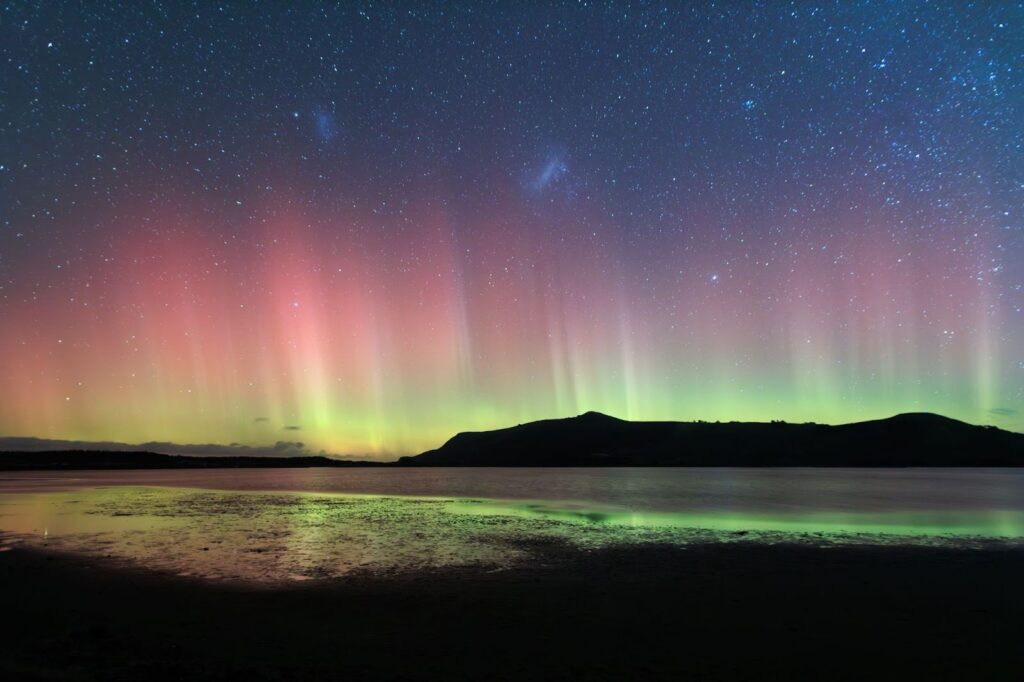
But you might not be aware that the same solar activity that causes auroras, when it happens on a much larger scale, can have other effects on our planet as well. This is usually experienced in the same places where auroras are visible. Researchers from the Solar Tsunamis team are working with industry partners like Transpower to make sure we understand this problem and have plans in place to deal with it safely. The main goal of this type of planning is to protect important equipment in the electrical grid from being damaged, while still making sure that the power network keeps up a steady supply of electricity to everyone who needs it.
Space weather
The Sun has a big effect on the weather we experience from day to day, which happens in the lowest part of the atmosphere – called the Troposphere. Space weather is also driven by the Sun, but happens much higher in the atmosphere than the Troposphere, and in the regions of space between the Sun and the planets of the Solar System.
Following a pattern of solar activity cycles that last for approximately 11 years, the Sun’s magnetic activity increases and decreases. During times of high activity we see more sunspots on its surface. Other things we can see happening are solar flares and coronal mass ejections (CMEs) – which can send big bursts of energy and material out from the Sun into outer space, and sometimes towards the Earth. When a CME hits our planet, it affects the Earth’s magnetic field, as well as causing auroras. This can be described as a solar storm, or even a solar tsunami.
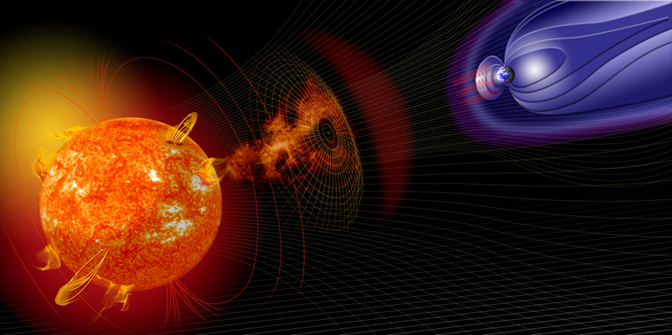
Geomagnetically Induced Currents
If a magnetic field is changing around wires or cables which conduct electricity, the electrons inside those conductors respond by moving along the wire. This is called an induced current. When currents are induced by changes in the Earth’s magnetic field, we call them Geomagnetically Induced Currents (GICs).
For most of Earth’s history, GICs were not a problem, and would have gone unnoticed. However, as human societies have gotten more and more technologically advanced, we’ve covered a lot of our planet with wires and cables designed to conduct electricity.
In 1859 the first major event that highlighted the extent of this problem was a huge solar storm called the Carrington Event. Over a number of days, auroras were visible in many places in the world where you wouldn’t normally see them. There weren’t a lot of power lines then, however many places in the world were connected by telegraph wires, which were designed to conduct electrical signals. Some telegraph pylons emitted sparks because of induced currents, and some telegraph operators reported receiving electric shocks from their equipment. Newspapers reported that some operators were able to disconnect their batteries and operate entirely using only the GIC current for several hours!
Forecasting and planning
Geomagnetic storms are a bit like tsunamis that sometimes hit the New Zealand coast, because we can get some warning that one is coming. Because of this we can take steps to protect our power network from it. Just like the initial earthquake that causes a tsunami can be detected hours in advance and warnings are sent out to move to higher ground, the solar activity that triggers a solar tsunami can be observed by a satellite between 15 minutes to an hour before it will reach Earth (see here for more information). This means we can have plans in place for power network operators to switch off some equipment, switch on blockers and filters, and do their best to reduce the damage while continuing to supply power to houses and businesses.
Planning for a GIC event is all about increasing the resilience of the power network. This can include:
- Taking steps to make the grid less vulnerable to damage from GICs
- Managing issues that occur during a solar storm by adapting to the situation and communicating effectively to keep the network operating
- Recovering after a solar storm, ensuring that the network can get back to normal as quickly as possible
- Learning from each event to make sure the next one goes more smoothly
Transpower’s GIC mitigation plan
After a solar storm in November 2001 damaged a transformer in Dunedin, Transpower developed a plan with steps that staff should take in their network control rooms to manage GICs in the lower South Island. Back then the focus was on the bottom of the South Island, as people thought the GIC would only be a problem there. The plan would be triggered by reports of a solar storm from the Space Weather Prediction Centre in the US, along with measurements of GIC in the South Island. The original plan advised staff to disconnect equipment in certain locations. This was aimed at reducing the amount of extra current from GICs that would flow along east-west transmission lines in the lower South Island.
Solar Tsunamis researchers were tasked to analyse this plan, see how well it worked, and look at ways to improve it. Daniel Mac Manus, then completing his PhD supervised by Craig Rodger, used data provided by Transpower and ran new simulations of the effect of GICs in the power network to do these evaluations.
The existing plan was effective for the lower South Island, but the researchers found ways that it could potentially be improved. They could disable many more power lines while still managing to keep supply on to end consumers, and also extending the plan to cover both the North and South Islands. They then worked with Transpower engineers in their control room to go through the new plan in detail. This involved systematically checking all the different lines that could be disconnected in response to a GIC, and seeing whether each change would destabilise the power network. Working through this process allowed the team to reach an agreement with the engineers on an optimised plan that would both improve GIC mitigation throughout the network and protect transformers, while still supplying reliable power to homes and businesses.
Another option the team has looked at is whether blocking devices can be used to filter out extra DC current where it isn’t wanted. Simulations show that these blockers could be used effectively as part of the new mitigation plan. Now work needs to be completed on what the design and costs of such blockers might be and where and how many are needed to be most effective.
Andrew Renton, Senior Principal Engineer at Transpower welcomed the cooperation between Transpower and the Solar Tsunamis researchers. “The potential threat that GICs pose to the power system is taken seriously by New Zealand’s electricity transmission system owner and operator. We appreciate the positive collaboration between the scientific community and industry and our ability to contribute to increasing the understanding of the effect this phenomena has on electricity systems. Working with the Solar Tsunami team we have been able to leverage the latest research to maximise our ability to maintain a stable power system during an event. This work has now been published in our new Operational Plan”.
The Grid Game
Tūhura Otago Museum developed the Grid Game as part of the Solar Tsunamis travelling showcase to give people a sense of the balancing act that power network operators have to undertake during a solar storm. In this game, water takes the place of electrical currents. One or more players take on the role of a GIC and try to pump enough water through the “transformers” to overload them, while another player takes the place of a power company trying to divert the extra water so power keeps flowing to the houses. If the GIC is too strong and the power company isn’t fast enough, water floods into the tubes representing transformers and starts spraying dramatically out of the top!
The Solar Tsunamis travelling showcase is currently touring locations in the South Island. To find out where you might be able to see it, check the Tūhura Otago Museum website.
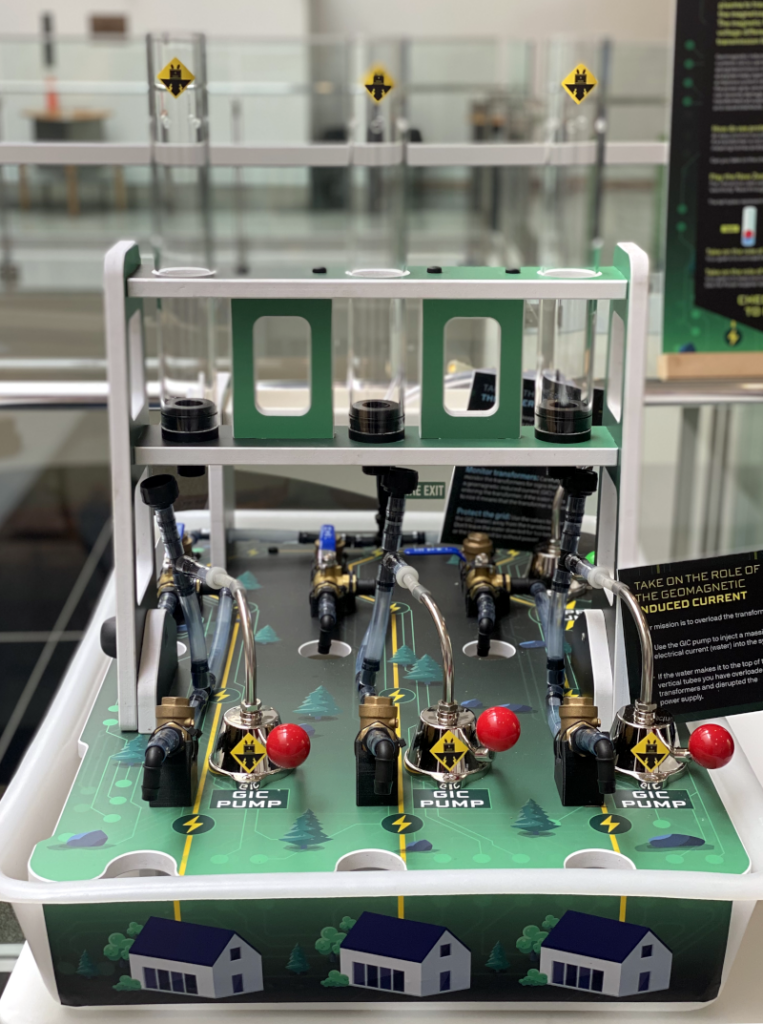
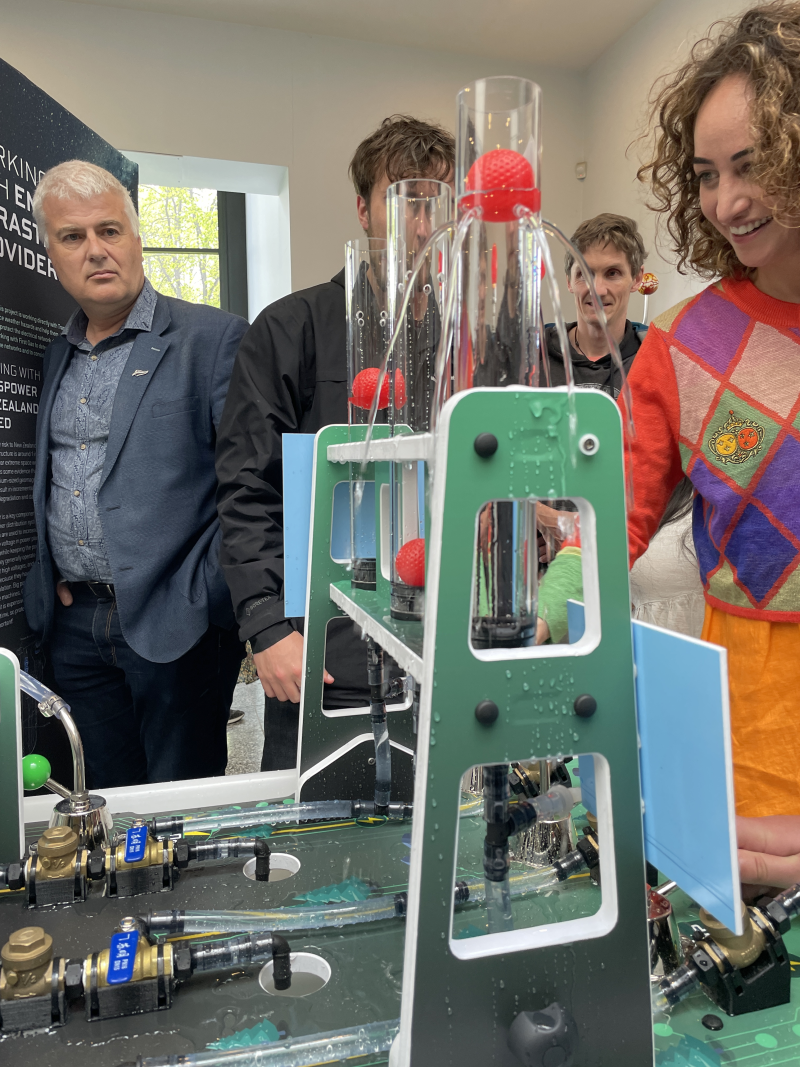
The Grid Game, created as part of the Tūhura Otago Museum science showcase Solar Tsunamis – Parawhenua Kōmaru. If you overload the transformers, water sprays out the top
